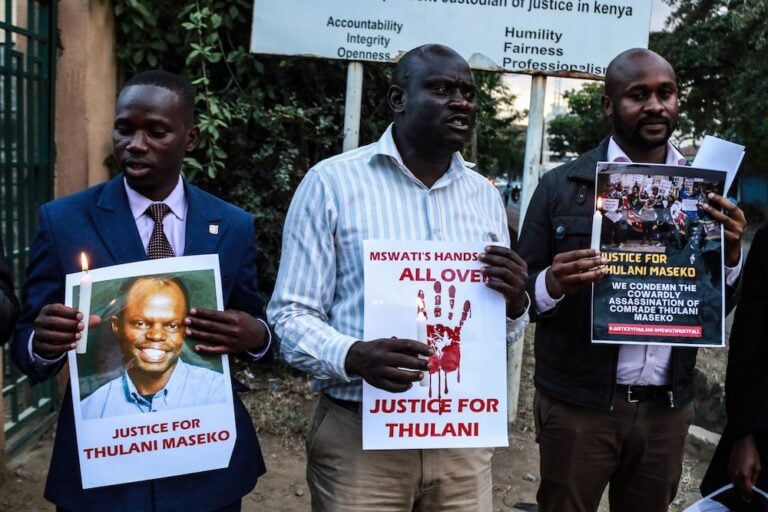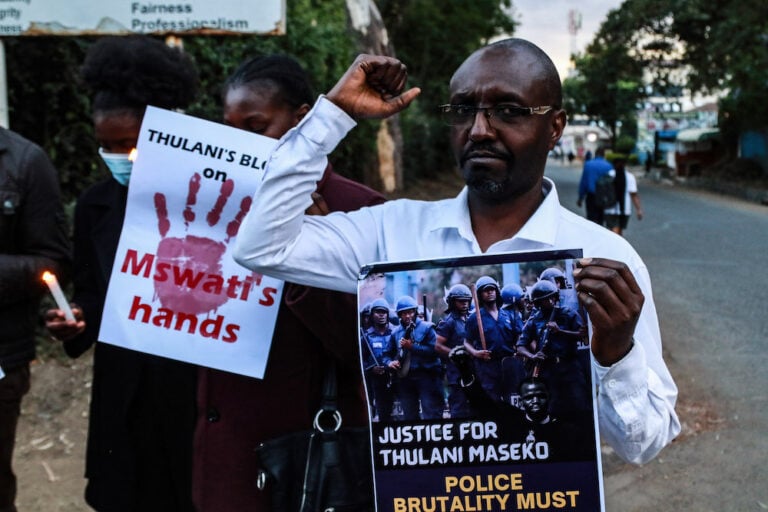(MISA/IFEX) – On 4 September 2001, the government of Swaziland appealed High Court Judge J Annandale’s 31 August ruling, which allowed “The Guardian of Swaziland” newspaper to resume publishing. The newspaper recently emerged from a four-month ban, announced on 4 May by Minister for Public Service and Information Mntonzima Dlamini through Legal Notice 69 of […]
(MISA/IFEX) – On 4 September 2001, the government of Swaziland appealed High Court Judge J Annandale’s 31 August ruling, which allowed “The Guardian of Swaziland” newspaper to resume publishing.
The newspaper recently emerged from a four-month ban, announced on 4 May by Minister for Public Service and Information Mntonzima Dlamini through Legal Notice 69 of 2001. On 31 August, that notice was declared invalid. In banning the publication, Minister Dlamini cited Section 3 of the Proscribed Publications Act of 1968, which gives his office unlimited powers to ban or suspend publications that do not conform with “Swazi morality and ideals.”
Mtato, editor of “The Guardian of Swaziland”, told MISA that the board of directors and shareholders of the Guardian Media Group (Pty) Ltd would meet on Thursday 6 September to discuss the way forward. “It is best that they decide what to do next. Our lawyers also confirmed their readiness to advise us on the issue,” he told MISA.
Since receiving notice of the banning of the newspaper, ten of the newspaper’s thirteen staff members were retrenched. As an alternative, the newspaper’s management succeeded in publishing an electronic version of “The Guardian of Swaziland” on its website at www.theguardian.co.sz
“It has been under trying conditions that we resorted to publishing on the internet. But we’ve seen a turnaround in readership, even if it meant that we were serving a privileged few (who had access to the internet) through this medium. We had to maintain the news service. It is our obligation to the public,” Mtato told MISA.
Background Information
On 4 May, the government of Swaziland banned the print version of “The Guardian of Swaziland” newspaper from circulating in the country. The newspaper was accused of not fulfilling all the
requirements under the country’s media laws.
“The Guardian of Swaziland” became a target immediately after printing stories about the king, his queens and the prime minister which, among other details, covered the king’s illness and the rumour that one of his wives had poisoned him.
On 22 June, His Majesty King Mswati III signed a decree allowing government ministers to ban publications without providing any reasons and without legal proceedings. Decree No 2 of 2001 was repealed on 25 July, and followed by Decree No 3 which, after further investigation, did in no way improve the press freedom situation in the country (see IFEX alerts of 25 and 6 July and 27 and 25 June 2001).


